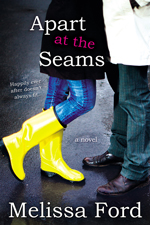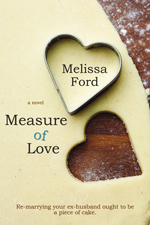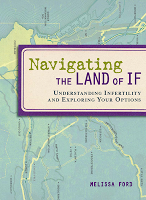MFA Sunday School (Seven: Villanelles)
![]() Welcome to MFA Sunday School, a once-a-week, free, online writing workshop. MFA Sunday School posts are uploaded on Sunday mornings, though you can read them or participate any time — the comment section is always open for people to post a link to their work or ask a question. You can subscribe to blog posts via the RSS feed, or look for them under the category heading “MFA Sunday School.” If this is your first time in “class,” you may want to jump back to the first post in the series in order to understand how things work, or peruse all of the past lessons as well as a glossary of terms by reading the MFA Sunday School Glossary and Course Archives.
Welcome to MFA Sunday School, a once-a-week, free, online writing workshop. MFA Sunday School posts are uploaded on Sunday mornings, though you can read them or participate any time — the comment section is always open for people to post a link to their work or ask a question. You can subscribe to blog posts via the RSS feed, or look for them under the category heading “MFA Sunday School.” If this is your first time in “class,” you may want to jump back to the first post in the series in order to understand how things work, or peruse all of the past lessons as well as a glossary of terms by reading the MFA Sunday School Glossary and Course Archives.
I wanted to work on self-editing your own writing today, but realized with the holiday weekend that it may be better to hold that for a week and do something more concrete such as another poetic fixed form. If you like puzzles or brain-teasers, the villanelle is the perfect form for you. It’s complicated, but once you understand the format, it becomes a writing exercise akin to a crossword puzzle that makes you stretch your brain and think about how words fit together.
The villanelle is a French form shaped by two rhyme sounds, a fixed meter*, and repetition. One of the easiest poems to look at in order to understand the form is Dylan Thomas’s “Do Not Go Gentle into That Good Night” from 1952’s In Country Sleep. In order to understand the form, all we need are the first two stanzas:
Do not go gentle into that good night,
Old age should burn and rave at close of day;
Rage, rage against the dying of the light.Though wise men at their end know dark is right,
Because their words had forked no lightning they
Do not go gentle into that good night.
Before we get to the rhyme scheme — which is the best-known aspect of the villanelle — let’s look at the meter, or the rhythm of the line. Just like music, poetry can have a set number of “beats” to a line, which is why poetry teachers often read poems aloud, having their class clap out the words to hear the inflections.
Villanelles and sonnets are written in iambs which are an unstressed beat coupled with a stressed beat: or ba-BUM. With the words “do not” in the first line, the “do” is soft and unstressed, whereas the voice lands harder on the word “not.” But the line obviously is longer than one iamb or two beats. It actually has five iambs strung together, which is why we say it is written in iambic pentameter. Iambic refers to the foot — the way the words are stressed — and pentameter is the length of the line: penta means five.
So now clap out that first line as you read it aloud, and you’ll hear the meter:
do NOT go GEN-tle IN-to THAT-good NIGHT
Got that?
There are many other types of poetic feet — such as trochee, spondee, pyrrhic anapest, amphibrach and dactyl — and many other forms of line length –monometer, dimeter, trimeter, tetrameter, pentameter, hexameter, heptameter, octameter — but those are all lessons for the future. Just wanted to point out that while iambic pentameter is popular and Shakespeare was in love with this line length, it isn’t the only meter that exists in poetry.
Okay, so now we need to look at the rhyme scheme. There are only two end-rhyme sounds (meaning, the last sound in the line) in a villanelle. Usually, when we write out a rhyme scheme, we use letters of the alphabet – a, b, or c — and we mean that all of the “a”s are the same rhyme sound: cat, hat, bat, mat. But a villanelle is different because we need to account for the fact that there are rhyme sounds and there are repeating lines and the rhyme sounds sometimes match the repeating lines.
Confusing.
So let’s pull apart those first two stanzas in order to understand.
Do not go gentle into that good night, (A)
Old age should burn and rave at close of day; (c)
Rage, rage against the dying of the light. (B)Though wise men at their end know dark is right, (a)
Because their words had forked no lightning they (c)
Do not go gentle into that good night. (A)
I’ve used uppercase and lowercase letters to mark the rhyme scheme. The capital letters refer to a repeating line. The lowercase letters refer to a repeating sound. Sometimes, the repeating sound is the same sound as the one used in the repeating line, so they use the same letter but are written in lowercase.
Stay with me — this looks confusing right now but will be clear in a moment.
The first and third line of the first stanza become the repeating lines. In the case of Thomas’s poem, the two lines that keep repeating throughout the poem are
Do not go gentle into that good night
and
Rage, rage, against the dying of the light
You will see those two lines pop back up as the third line in each subsequent stanza as well as form the final two lines of the poem in the quatrain. (A quatrain is just a shmancy way of saying that four line ending stanza. It’s different from the tercets — or three line stanzas — that are used in the rest of the poem.)
From that point on, the first line in each stanza will rhyme with “night” or “light,” hence why I marked it with a lowercase “a.” Whenever you see that lowercase “a,” it’s a word that ends with that “ight” sound. Whenever you see the uppercase A (or B), it’s a complete repetition of that A or B line. So yes, the A and B lines rhyme, even though they are written with two different letters.
And what about the “c” line? The middle line of the first stanza is the “c” line that is a repeating sound throughout the poem. In this case, the word is “day,” and the subsequent words used are they, bay, way, gay, and pray. Every time you see that lowercase “c,” the line rhymes with that first lowercase “c.”
The poetic form then can be written as such:
A
c
B
a
c
A
a
c
B
a
c
A
a
c
B
a
c
A
B
If you want to take a look at some other popular villanelles, take a look at my favourite — Sylvia Plath’s “Mad Girl’s Love Song.” Other good ones are Elizabeth Bishop’s “One Art” and Theodore Roethke’s “The Waking.”
Pretty cool, right?
Homework: write a villanelle. And when you do, come back and leave a comment with a link to your villanelle posted on your blog. That way, future students can take a look at other examples of villanelles as well as visit their virtual classmates’ blogs.
*Meter is one of the arguing factors in a villanelle. Purists call for iambic pentameter, but it is still considered kosher to not incorporate a certain meter into your villanelle, giving much greater weight to the rhyme, repetition, and construction of tercets (with a quatrain). But for the sake of this exercise, try your hand at iambic pentameter. I think it actually makes it easier to have that lilt carry your word choice. Plus, when we talk about sound in poetry and fiction, you’ll have already started developing your ear for it.













9 comments
I’m intrigued by this one, will hopefully come back with a link when coming back from vacation.
I’m having a really hard time with this. It is yet another type of poetry that I’ve never heard of before and I appreciate the introduction but I can’t get my head around the iambic pentameter. I can write a line with ten syllables but I can’t for the life of me figure out which beat is stressed and which is unstressed. I’ve even tried clapping. I just can’t hear it. Could this be some form of tone deafness or does anyone have any hints on how to figure it out?
^^ this. I have a half-written post that pretty much says the same . . . the poem is expressing as bloggyprose I think
Want to leave me a line and I’ll tell you if it’s in iambic pentameter? Or tell you how to tweak it so it will be?
Okay, I did it. Or at least made an attempt. It’s kind of rough, but I’d appreciate some feedback. Thanks!
http://soonafamily.wordpress.com/2012/06/14/june-poem/
OK, just saw this a few days ago
I am guessing that this:
“I don’t know what to wear today” he said
is, and this:
“Bursting the bubble of yesterday’s dream”
isn’t?
Correct, Stinky. First one is iambic pentameter. Second example isn’t.
Thanks I think I have it now. Iambic pentameter seems to make me bob my head when reading it. Can’t do it properly with the second one
I just posted this one but have the rhythm all wrong. wrote it before realizing.. so I have to adjust it at some point to get it correct. I did enjoy finding the words and lines though.
http://marwil.org/2012/06/27/summer-breeze-and-bumblebees/